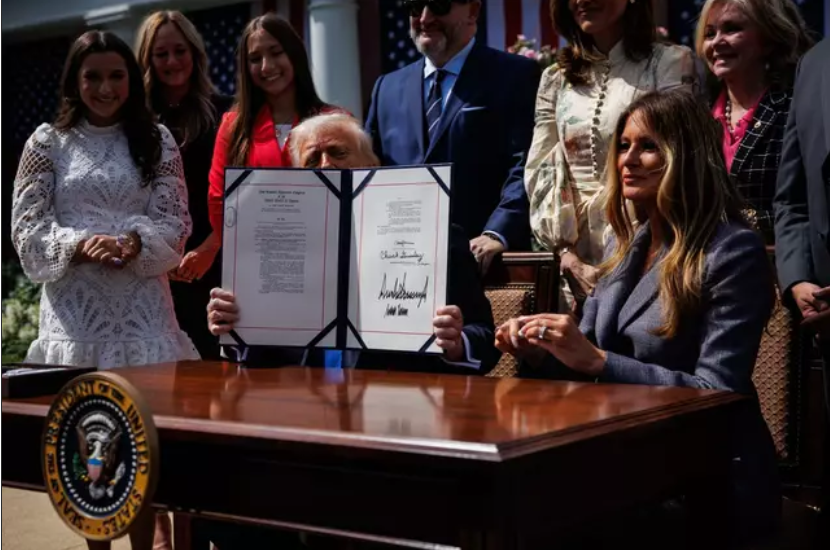In an unprecedented moment, First Lady Melania Trump made history on May 19, 2025, by adding her signature to the Take It Down Act during a White House ceremony, becoming the first presidential spouse ever to sign federal legislation alongside the president.

Although her signature carried no legal weight, the symbolic act immediately sparked intense constitutional debate about the role of unelected family members in the legislative process. President Trump, after signing the bill into law, invited her to sign as well, declaring she “deserved” to because of her advocacy. The legislation, which criminalizes the distribution of non-consensual intimate imagery including AI-generated deepfakes, was one of Melania Trump’s key priorities and passed Congress with overwhelming bipartisan support.
Throughout early 2025, she actively lobbied lawmakers, hosted roundtables with victims, and personally pushed for the bill’s passage—an unusually direct role for a First Lady. Critics argue her signing crossed constitutional boundaries and blurred the separation of powers, while supporters see it as symbolic recognition of her work. Legal scholars agree the act has no legal effect but warn its precedent could reshape public expectations of presidential families. The Take It Down Act itself introduces federal penalties for distributing explicit images without consent, mandates social media platforms remove reported content within 48 hours, and provides victims stronger legal remedies.
While praised as a necessary step to combat digital exploitation, it has also raised free speech concerns among digital rights groups worried about abuse of takedown systems. The controversy surrounding Melania Trump’s signature highlights evolving questions about executive power, family involvement in governance, and the shifting role of the First Lady, leaving a legacy that future administrations must either embrace or reject.
